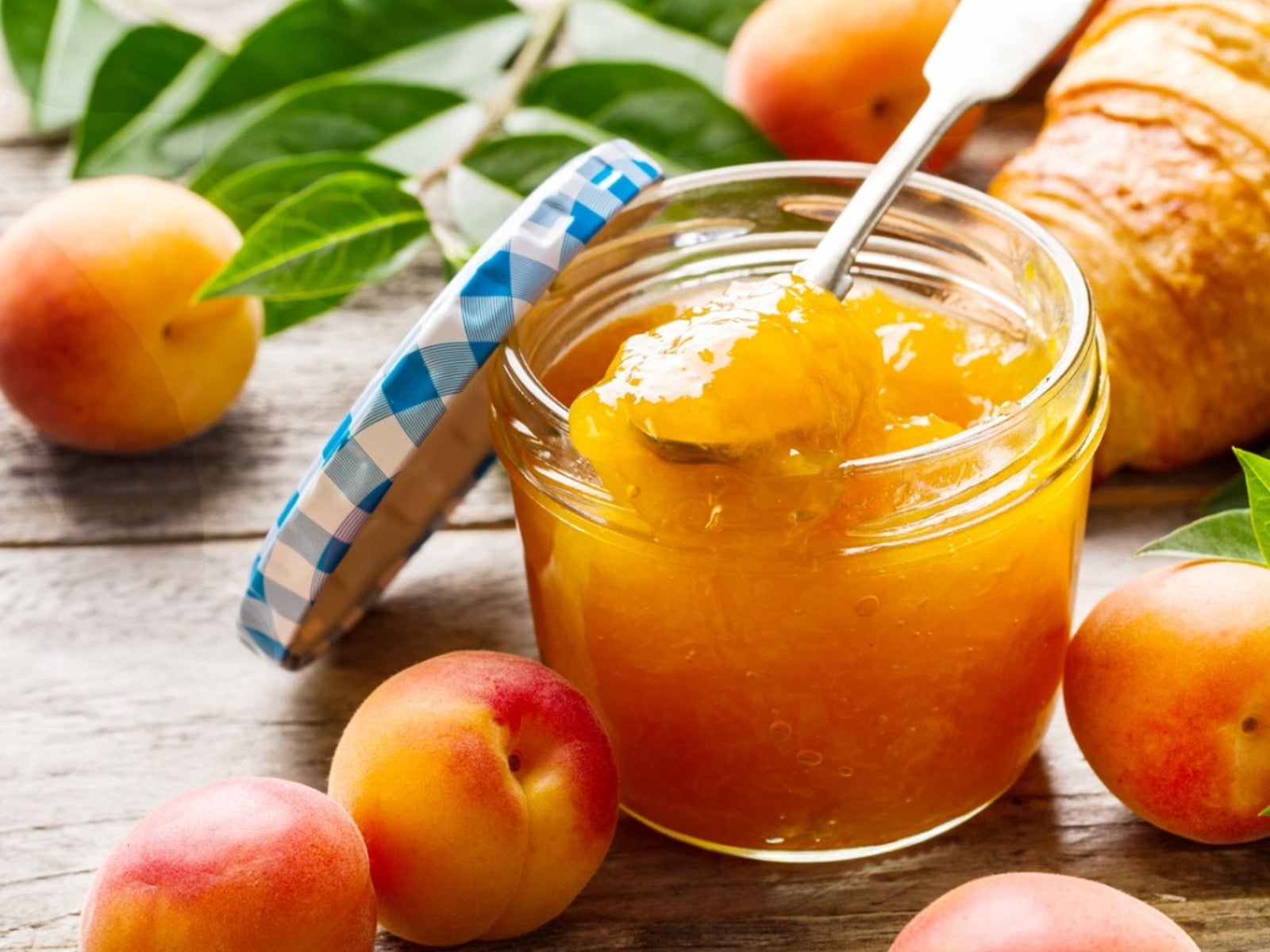How To Preserve Apricots From The Garden

If you have access to an apricot tree or two you, might end up with more fruit than you can eat. So what do you do when you’ve eaten and given away all the fresh fruit you can? Can you freeze apricots? What about drying them? Keep reading to learn about freezing apricots, how to make apricot preserves and how to dry apricots for long term storage.
How to Preserve Apricots
When you’re sick of fresh apricots and the neighbors want nothing more to do with them but you still have plenty of fruit, you will need to preserve them. (You could always compost them, but that would be a shame).
There are three basic ways to preserve fresh apricots: freeze them, make apricot preserves, or dry them. You could also juice, can or make syrup out of them, but for the moment we will focus on the previous three methods.
How to Freeze Apricots
Frozen apricots may be frozen with or without sugar and may be frozen halved, sliced or pureed. Prior to freezing you must prep the fruit.
Select firm but fully ripe fruit. Wash, halve and pit the apricots. Peeling and slicing is optional. If the fruit is not peeled, heat it in boiling water for half a minute to keep the skin from toughening as it freezes. After half a minute in boiling water, plunge into ice water to cool and then drain.
Methods for Freezing Apricots
Prepare the fruit for freezing using one of the following methods.
Unsweetened Dry Pack:
Dissolve ¼ tsp (750 mg.) ascorbic acid in ¼ cup cold water for each quart of fruit. Toss with fruit.
Sign up for the Gardening Know How newsletter today and receive a free copy of our e-book "How to Grow Delicious Tomatoes".
Sugar Pack:
As above toss the fruit with dissolved ascorbic acid. Mix ½ cup (100 g.) of sugar with 1 quart (950 ml.) of sliced fruit.
In both cases pack the apricots leaving ½ inch to 1 inch (1-2.5 cm.) of headspace (headspace depends upon the size container you use). If using plastic freezer bags, remove as much air as possible. Seal your containers.
Syrup (Liquid) Pack:
For tangy fruits like apricots, a 40-50% syrup should be used. You will need about ½ cup (100 g.) syrup for each pint of fruit. Stir the sugar into lukewarm water until all the sugar has dissolved. Chill the syrup, which can be made a day ahead and kept in the fridge until ready to use. Add ¾ tsp (4 ml.) of ascorbic acid per quart of cooled syrup.
Fill your container ¼ full with syrup and then fill with sliced apricots, pressing down firmly. Cover with additional syrup as needed, again leaving headspace appropriate to the container size. If you’re using plastic freezer type bags, remove as much air as possible. Seal the containers.
Label and date frozen fruit. Fruit can be stored in the freezer for up to a year.
How to Dry Apricots
Select firm fruit. Wash, cut in half and pit. Do not peel. To prevent browning, toss apricots with ascorbic acid as above, or citrus juice and water. Allow them to soak for 5 minutes. Omit this step if you don’t care if the fruit changes color. Drain the fruit.
Arrange apricots on dehydrator racks, cut side up. Dry at 130-150 F. (54–65.5 C.) for 24-36 hours for halves, less time for quartered fruit. Dried fruit will be leathery and pliable.
You can also dry your apricots into fruit leather after pureeing the fruit. Follow the directions provided by the manufacturer for your dehydrator.
Label and store dried fruit in sealed plastic containers or bags in a cool, dry area or in the fridge or freezer for 6-12 months.
Apricot Preserve Recipe
There are many recipes for apricot preserves. The following is as simple as it gets with just four ingredients and 30 minutes of your time.
You will need:
- 5.5 lb. (2.5 kg) fresh apricots
- ¼ cup (60 ml) water
- ¼ cup (60 ml) lemon juice
- 4 lb. (1.8 kg) granulated sugar
Wash the jars, dry, upend on a cookie sheet and sterilize in an oven at 270 F. (130 C.) for 20 minutes.
Wash and dry apricots. Cut in half and remove pit. Place the prepped apricots, water and lemon juice in large, wide saucepan. Bring to a simmer over medium heat, stirring occasionally.
When the apricots come to a simmer, cover and cook for an additional 10-15 minutes, stirring frequently. At this juncture if you wish for a smoother preserve, remove from the heat and puree with a hand blender.
Otherwise, dissolve the sugar into the apricot mixture, stirring constantly. With the lid off, increase the heat and bring to a boil, stirring occasionally so it doesn’t stick. The mixture will reduce and thicken as it cooks. Skim off any foam with a spoon.
After 20 minutes or so, check the temp of the preserves. It should be 220 F. (104 C.) and thick.
Remove it from the heat and allow cooling for 10 minutes. Carefully ladle into the hot, sterilized jars. Seal immediately with sterile lids.

Amy Grant has been gardening for 30 years and writing for 15. A professional chef and caterer, Amy's area of expertise is culinary gardening.
